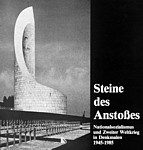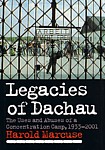| 2.
Student Survey results (back to top)
- Just for fun, try this BBC
on-line quiz: What do you know about present-day Germany? (Dec.
2002). In German: siehe auch the Dec. 2005 Der Spiegel
article "Die
Hitler-Obsession," with a link to a German
version of the quiz.
- I asked students to write down the following things on a sheet of
paper, as well as they can remember:
- What books and films about Germany have you read or seen?
- Have you ever traveled to Germany (when, what places did you visit,
for how long)?
- What courses have you taken that have included material on Germany
or German history?
- What recent news events concerning Germany can you think of?
- Name some famous Germans in the order that they occur to you.
- Here is a summary of the responses:
- Books: Wiesel, Night; Levi, Drowned
and Saved; Philip Roth, Plot against America; Lebert,
Father's Keeper; Lipstadt, Denying the Holocaust;
Wagner biography
Films: Schindler's List (8); 3 each: Run
Lola Run, Goodbye Lenin, Band of Brothers;
2 each: Munich, Pianist, Diary of Anne Frank;
1: Life is Beautiful, Im Juli
no one had seen Downfall, or Nasty Girl.
- Travel: A record (in my experience) 8 of 21 people
who turned in their surveys had been to Germany: most to Berlin,
then Munich, Frankfurt, Cologne/Dusseldorf, Hamburg, Vienna (Austria)
and Dresden. Also to Mauthausen former concentration camp and Hitler's
"Eagle's Nest."
- Courses: Seven students had taken Hist 4c (Western
Civ.), also lower and upper division Europe surveys, prof. Derwin's
Holocaust Lit. course, and 3 quarters of German language.
- News events: election of first female chancellor
Angela Merkel, new Berlin Holocaust memorial, natural gas supply
problems because of Ukrainian boycott, collapse of ice rink roof
on weekend.
- Famous Germans (this was very quick at the end):
Hitler (10); Wagner (4); Kant, Bismarck, Einstein (3); Luther, Bach,
Frederick the Great, Goethe, Grimm brothers, Beethoven, Marx, Nietzsche,
Wilhelm, Durkheim, Hindenburg, Himmler, Rommel, Anne Frank, Schindler,
Bonhoeffer, Kohl, Schroeder, and a basketball player (Dirk Nowitzki?).
I was surprised at the high number of cultural figures--that has
not been the case in the previous times I've asked this question.
|


